- Rent, Lease, or Purchase
- |
January 26, 2021
What is a Shipping Container Dolly?
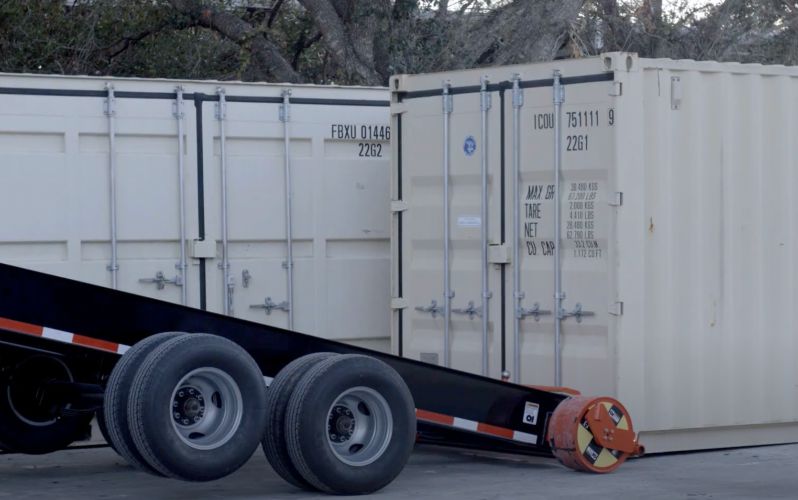
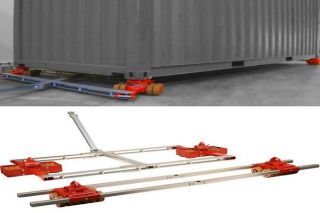
Whether you're moving empty shipping containers to a different location on your site or transporting cargo over long distances, dollies remain a cost-effective and reliable solution.
These platforms come in different shapes and sizes, so it’s important to identify your requirements before investing. The wheels and accessories on a dolly will determine the maximum weight you can carry. Some wheels only work on even surfaces and smooth roads, while heavy-duty rollers allow you to transport containers on uneven ground.
In this article, we'll look at the different types of container dollies, their different designs, and applications to help you find the right solution for your next project.
What Are Container Dollies?
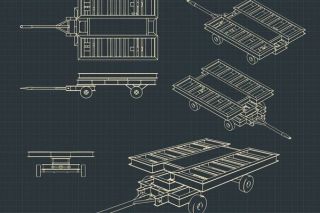
Shipping container dollies consist of heavy-duty steel frames with wheels. There are four twist locks or fixtures at each corner of the chassis that holds the container in place.
A standard dolly consists of a front steerable member and a rear straight-line system. These two components combined help maneuver the container like your car- the front part steers while the rear follows. You can also change the configurations depending on your delivery truck, loading equipment, and distance.
The front member of a dolly has a pulling handle with a towing eye. You can attach the handle to a forklift, truck, or any pulling vehicle to move your containers.
In any dolly-based system, wheels play a critical role. The type of wheels on your dolly influences the ease with which you can move your container. The weight limit of your dolly also depends partially on the rollers.
Dolly Wheels - Sizes and Types
Traditional dolly wheels are made of nylon or steel. While these wheels work well over short distances, they will wear out quickly on uneven surfaces.
Modern dollies have polyurethane or composite wheels that offer excellent toughness and wear resistance. There are even hybrid dolly systems that use car tires (18" diameter) as wheels.
Conventional dollies have wheel diameters ranging from 3.3" to 6.6." Besides improving the load capacity of the dolly, wheels also increase the ground clearance and protect your containers. A set of 3.3" wheels provide a 6.6" dolly height while shifting to 5.5" wheels can increase the ground clearance to 11.8".
Uses of Container Dollies
If your container carries a load without any center support, using forklifts can be risky. In these instances, a container dolly can be highly useful for moving shipping containers with uneven weight distribution.
You can easily steer a dolly even at max capacity, making them an asset for narrow roads. Dollies can also be useful when planning a shipping container delivery to a remote location with bad roads and uneven surfaces.
Types of Dolly Systems
Depending upon the frame's load capacity, wheel type, and fixtures, we can classify a dolly into the following categories:
- Indoor and Outdoor Dollies
- Medium and Heavy-Duty Dollies
- Specialized Dolly Systems
Let's take a closer look at each specific system:
Indoor and Outdoor Dollies
Indoor dollies have a low profile with cone-style fittings. They are designed for smooth pavements and surfaces. Meanwhile, outdoor dollies have large-sized wheels with twist locks that can hold the container in place and work well on rough roads.
Dollies Based on Weight-Capacity
While all dollies can accommodate the width of standard containers, the amount of cargo loaded on a dolly differs. The wheel axle design and material may also change depending on the load capacity. For example, a DynaDolly has a capacity of about 5 to 15 tons, while JUNG dollies come in 28-ton, 40-ton, and 60-ton sets.
Specialized Dolly Systems
Modern systems combine the convenience that dollies offer with highly functional accessories that can help you lift and tow containers of all sizes. Some of these special-purpose equipment systems include:
1. Cheetah Towing System
Chris Christiansen and his friend Gary Gates developed the Cheetah Lift - a hydraulic lifting system that provides excellent functioning even in tight spaces. The Cheetah Lift towing system utilizes hydraulics, jacks, and balancing to transport shipping containers.
Another perk the Cheetah offers is that it only requires two people to lift the shipping container and place it on the dolly. Additionally, the four-meter Cheetah tow truck requires much less space than a 10-meter flatbed.
Watch how the Cheetah system works.
2. JUNG Container Dollies
JUNG dollies are heavy-duty systems for both indoor and outdoor use. The most unique aspect of these dollies is their patented JUWAthan+ wheels. You can move them over small obstacles without stopping due to their highly flexible rollers.
Every JUNG dolly uses a special blend of polyurethane baked in a furnace over a long duration, imparting incredible elasticity and toughness to the wheels.
3. DynaDolly
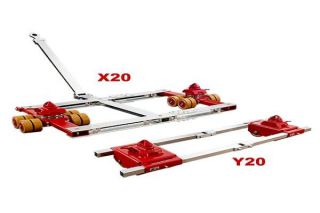
Previously known as 'Texas Come Along,' the DynaDolly is a versatile dolly system with a unique, patented construction. Its design includes a dolly that you can tow with a regular truck and place under an empty container. You can then use jack stands with the attached winch to maneuver the container on the dolly.
DynaDolly's design enables you to convert the dolly into a Gooseneck trailer, roll-back trailer, or a 13-yard dump body. Its compact shape allows you to unload large shipping containers in a space equal to the truck's turning radius. The DynaDolly is legal and DOT approved for use in all types of trucks.
Dolly Rentals
Because dollies are specialized systems manufactured from premium materials, prices can run high. If you do not intend to move your containers frequently, purchasing a dolly might be expensive. In such cases, renting can be an excellent alternative. Here are some companies from where you can rent dollies for your shipping container:
Please check your delivery location and the rental plans before selecting dolly suppliers.
If you need a long-term solution, you can also consider purchasing dollies for your site. Always compare the price of the dolly you're buying with the rental cost to decide what's best for you.
What Are the Alternatives to Dollies?
If you want to haul heavy containers that require frequent loading and unloading or stacking, a shipping container dolly can be inadequate.
Similarly, dollies aren't as effective for handling non-standard containers like high-cubes and flat rack shipping containers for delivery. In such cases, you can use the following alternatives:
Forklifts
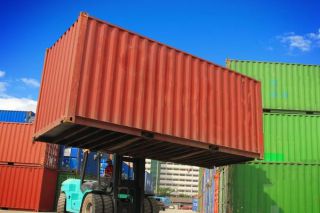
Forklifts are a convenient option for moving and stacking containers indoors. While selecting a forklift, ensure that the forklift has a minimum capacity of 15,000 lbs. and the arms are wide enough to hold the containers.
Also, note that not all forklifts work with containers. Depending on the type of equipment, the container may buckle while loading if all the weight or pressure concentrates at the center.
Cranes
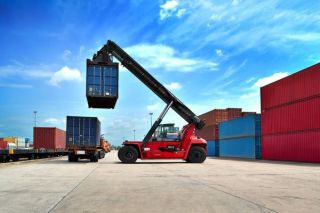
Cranes have the highest capacity of all moving equipment. You can use a crane to place your container on a trailer truck or a flatbed to deliver cargo over large distances. The only drawback to using cranes is that you’ll need an operating license or a licensed operator to move the containers.
Trucks and Trailers
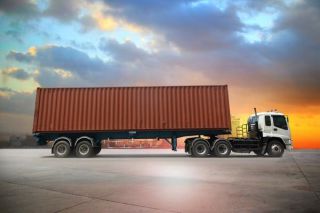
Flatbed trailers, trailers, and other large vehicles can help you transport containers directly to your site. You can also rent a trailer for short-term requirements.
Read our comprehensive guide on how to move shipping containers to learn more about container transport and delivery options.
Conclusion
Shipping container dollies can be an effective option for moving your containers around, especially if they have uneven loading or no central support.
Before selecting a dolly system, you must look at its weight capacity, wheel type, and ease of attachment. If a dolly seems inadequate for your shipping container, you can rely on alternative moving methods to ship your goods.
Mobile Modular Portable Storage is the leading supplier of new and used shipping containers for rent and sale. We have our own fleet of vehicles to deliver container solutions across the country. Our flexible 30-days rental plan instead of the conventional 28-days billing cycle allows you to use our containers for two extra days at no additional cost.
Contact us at 866-459-7600 or request a quote to learn more about container solutions.
Frequently Asked Questions
Can I Place Wheels on a Shipping Container?
You can use jack lugs and winches to attach dollies to your shipping container. Dollies are wheel-mounted frames that can help you move your container across different locations on your site.
Alternatively, you can also put castor wheels and heavy-duty wheels with lug sets. These DIY wheel kits are available online and include an instruction manual with the steps you must follow.
How Do You Move a 20 ft. Container?
You can move a 20-foot container using dollies, forklifts, cranes, trucks, and trailers. When you're moving shipping containers, you must consider the weight of the container, load distribution, distance, and the surface on which you're moving the container.
Dollies are a cost-effective option for short distances with uneven loads, while forklifts and cranes are perfect for heavy containers.
How Do You Lift a 40-foot Container?
You can lift a 40-foot container over small heights with the help of pallets and jack lugs that fit on the ends of the container. If you want to raise a 40-foot container over a more significant height, you'll need cranes, forklifts, or a combination of specialized systems depending upon the load in the container.
Related Blogs

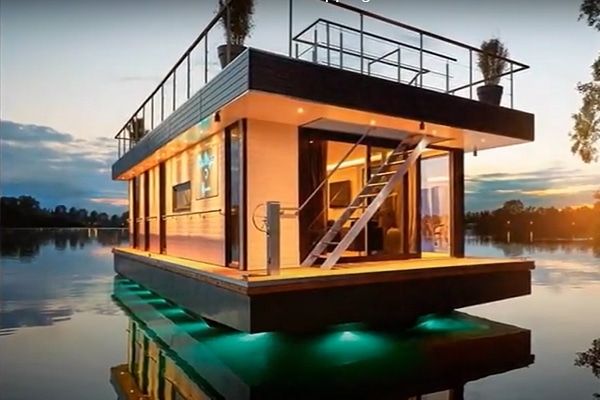

Subscribe to Our Blog
Enter your email address to subscribe to the blog and receive the notification of new posts by email.
Thank You for Subscribing to Our Blog!
Stay tuned for upcoming emails with valuable content that we hope will enhance your experience with our brand.
Both Pardot and mg360 form submissions failed.
